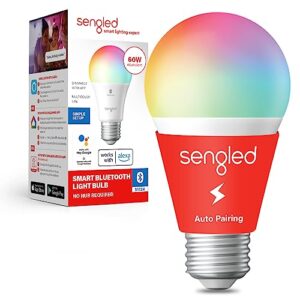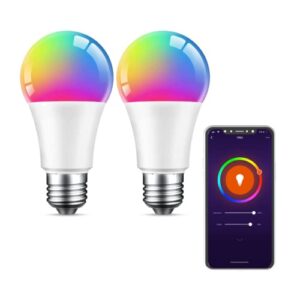Do Smart Lights Save Money?
Key Takeaways
- Smart lights that have earned the ENERGY STAR are energy efficient and consume less electricity compared to traditional bulbs
- Smart lights can help reduce electricity bills by allowing you to control and automate their usage, resulting in energy savings
- Smart lights use less electricity compared to traditional bulbs due to their LED technology, potentially leading to significant reduction in electricity bills over time
Smart lights have gained popularity in recent years due to their convenience and ability to be controlled remotely. But do they actually save money? Let’s explore the information available to find out.
Energy Efficiency of Smart Lights
According to the ENERGY STAR website, smart lights that have earned the ENERGY STAR are indeed energy efficient. They use less energy when in use and in standby mode. This means that even when the lights are not actively being used, they consume less electricity compared to traditional bulbs.
The New York Times Wirecutter explains that smart lights can help reduce electricity bills by allowing you to control and automate their usage. By turning off lights remotely or setting them on schedules, you can avoid leaving lights on when they are not needed, resulting in energy savings.
Energy Savings and Cost Reduction
Smart lights not only save energy but also contribute to cost reduction. According to Palmetto, smart lights use less electricity compared to traditional bulbs due to their LED technology. LED bulbs can use up to 75% less electricity and last much longer. By replacing traditional bulbs with smart lights, you can potentially see a significant reduction in your electricity bills over time.
The U.S. Department of Energy estimates that transitioning to LED lighting could save over $30 billion in energy costs by 2035, as mentioned in a blog post by Lumary Smart. This highlights the long-term cost-saving potential of LED technology, which is commonly found in smart lights.
In an article by Android Central, it is stated that LED bulbs, including smart lights, are much more energy-efficient than older incandescent bulbs. For example, a 12W LED bulb only costs about a dollar a year to operate, while a single 60W incandescent bulb typically costs around $4.80 a year. This significant difference in energy consumption translates to noticeable savings on your electric bill year-round.
Factors Affecting Savings
The actual amount of savings from using smart lights depends on various factors. These factors include the electricity rate, the number of bulbs being replaced, and personal usage habits. While the cost savings can be significant in the long term, it’s important to consider the upfront cost of smart bulbs. They typically have a higher initial price compared to traditional bulbs, as mentioned in the Android Central article. However, over time, the energy savings can outweigh the initial investment.
Conclusion
Based on the information available, it is clear that smart lights have the potential to save money. Their energy-efficient LED technology, combined with the ability to control and automate usage, can contribute to reduced energy consumption and lower electricity bills. While the upfront cost of smart bulbs may require some initial investment, the long-term savings make them a cost-effective choice.
Related Websites:
FAQs:
Q: Do smart lights save money?
Yes, smart lights can save money in several ways. They use LED technology, which is energy-efficient and consumes less electricity compared to traditional lighting options. Smart lights also offer energy-saving features and automation capabilities, allowing you to optimize lighting usage and reduce unnecessary energy waste. Additionally, the long-term savings potential through energy efficiency and automation can offset the initial investment cost of purchasing smart lights.
Q: What types of smart lights are available in the market?
There are various types of smart lights available in the market. Some popular options include smart LED bulbs, smart light strips, smart light switches, and smart light fixtures. Each type offers different features and compatibility with smart home systems.
Q: Are there any rebates or incentives for adopting smart lights?
Yes, in some cases, there may be rebates or incentives available for adopting smart lights. These incentives can vary depending on your location and utility provider. It’s recommended to check with your local government or utility companies to see if there are any programs or initiatives that offer financial incentives for energy-efficient upgrades like smart lights.
Q: What are the potential money-saving benefits beyond energy efficiency?
Smart lights offer several money-saving benefits beyond energy efficiency. They have dimming and scheduling features that allow you to optimize lighting levels and reduce unnecessary usage. With remote control and monitoring capabilities, you can easily turn off lights when not needed, avoiding energy waste. Smart lights also have occupancy and motion sensors, which detect activity and automatically turn off lights in unoccupied areas, further reducing energy consumption.
Q: How can I accurately analyze the cost savings of smart lights?
To accurately analyze the cost savings of smart lights, you should consider factors such as determining the average electricity rate in your specific area, calculating potential energy savings based on usage patterns, and factoring in additional costs like maintenance and compatibility. It’s also important to evaluate your specific needs and usage patterns to determine the financial benefits of smart lights in your particular situation.






